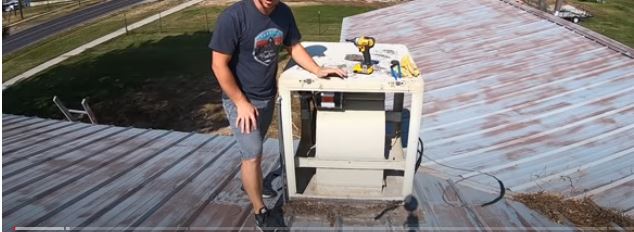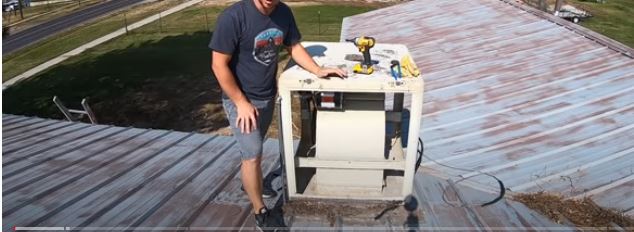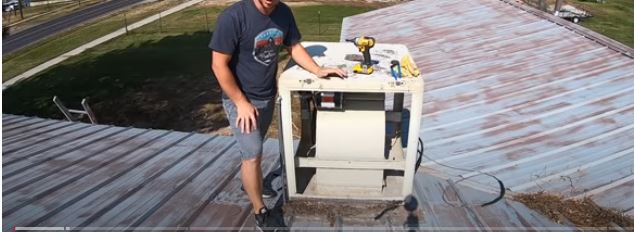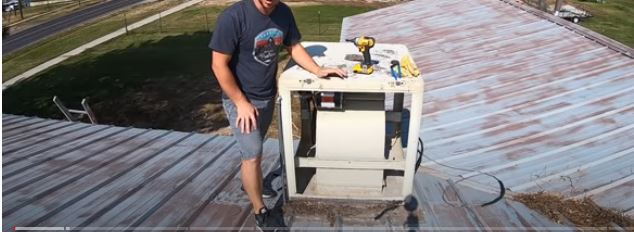
Precision and Eco-Performance: Professional Sustainable Roofing Done Right
I. Introduction
A. Importance of sustainable roofing
In today’s environmentally conscious world, sustainable roofing is more important than ever. It’s not just about reducing our carbon footprint; it’s about creating a healthier, more efficient living environment. Sustainable roofing is a fundamental element in the pursuit of sustainable building practices, playing a significant role in energy conservation, cost savings, and environmental protection.
Sustainable roofing goes beyond traditional roofing practices by considering the long-term environmental impact of the materials and techniques used. By choosing sustainable roofing options, we can contribute to a greener future while enjoying the immediate benefits of energy efficiency and cost savings.
B. Overview of precision and eco-performance in roofing
Precision and eco-performance are the two pillars that hold up the edifice of sustainable roofing. Precision ensures the meticulous installation and maintenance of the roofing system, securing its longevity and effectiveness. On the other hand, eco-performance involves the use of eco-friendly materials and techniques that reduce environmental impact and promote energy efficiency. Together, they form the backbone of professional sustainable roofing done right.
When precision is prioritized during the installation and maintenance process, it guarantees that the roofing system functions optimally and withstands the test of time. Eco-performance, on the other hand, focuses on using materials and techniques that are not only environmentally friendly but also contribute to energy savings and reduced waste. By combining precision and eco-performance, we can achieve roofing solutions that are both sustainable and effective.
II. Understanding Sustainable Roofing
A. Definition and principles of sustainable roofing
Sustainable roofing refers to the practice of installing and maintaining roofs using methods that lessen their environmental impact. The principles of sustainable roofing revolve around the efficient use of resources, reduction of waste, and maximizing roof lifespan. It is about making choices that are not only good for your home or business but also for the environment.
One of the key principles of sustainable roofing is resource efficiency. This involves using materials and techniques that minimize waste and maximize the use of available resources. Additionally, sustainable roofing focuses on reducing the overall environmental impact by considering factors such as energy efficiency and the use of recycled or recyclable materials.
B. Benefits of sustainable roofing
1. Energy efficiency
Sustainable roofing can significantly improve the energy efficiency of a building. It helps keep the building cool during the summer and warm during the winter, reducing the need for air conditioning or heating, thus saving energy.
By utilizing materials and techniques that enhance insulation and reduce heat transfer, sustainable roofing can minimize the reliance on artificial cooling and heating systems. This translates to lower energy consumption and reduced utility bills.
2. Reduced environmental impact
Sustainable roofing materials are often made from recycled or recyclable materials, which means less waste goes to landfills. Additionally, by improving energy efficiency, these roofs help reduce greenhouse gas emissions.
By choosing sustainable roofing options, we can contribute to a greener future by minimizing the use of new resources and reducing the amount of waste generated. This not only benefits the environment but also helps create a more sustainable and resilient community.
3. Cost savings
While the initial cost of sustainable roofing might be higher, the long-term savings are substantial. Energy savings, reduced maintenance costs, and extended roof life all contribute to the overall cost-effectiveness of sustainable roofing.
Investing in sustainable roofing can lead to significant cost savings over time. The energy efficiency of these roofs reduces the demand for artificial cooling and heating, resulting in lower utility bills. Additionally, the durability and longevity of sustainable roofing materials minimize the need for frequent repairs and replacements, further reducing maintenance costs.
C. Materials and techniques used in sustainable roofing
Sustainable roofing materials include metal, slate, clay, and even green roofs planted with vegetation. These materials are chosen for their durability, energy efficiency, and eco-friendly properties. Techniques like cool roofing and solar-ready roofing also fall under the umbrella of sustainable roofing, aimed at maximizing energy efficiency and minimizing environmental impact.
Metal roofing is a popular sustainable option due to its durability, recyclability, and ability to reflect sunlight, reducing cooling costs. Slate and clay tiles are natural materials that have a long lifespan and can be recycled at the end of their use. Green roofs, which are covered in vegetation, provide insulation, reduce stormwater runoff, and promote biodiversity.
Cool roofing refers to roofs that reflect more sunlight and absorb less heat, reducing the need for air conditioning and lowering energy consumption. Solar-ready roofing, on the other hand, involves incorporating solar panels into the roofing system, harnessing renewable energy and further reducing reliance on non-renewable energy sources.
By utilizing these materials and techniques, sustainable roofing can contribute to a more energy-efficient and environmentally friendly building.
III. The Role of Precision in Sustainable Roofing
A. Importance of precision in installation and maintenance
Precision in the installation and maintenance of sustainable roofing ensures its maximum performance and lifespan. Even a minor error during installation can lead to significant problems down the line, compromising the roof’s sustainability and efficiency.
Proper installation techniques, such as accurate measurements and correct alignment, are crucial to ensure the roofing system’s integrity. Precision also plays a vital role in preventing water leaks, maintaining insulation effectiveness, and reducing the risk of structural damage.
B. Ensuring proper insulation and ventilation
Precision in the installation process also guarantees proper insulation and ventilation. Insulation plays a crucial role in maintaining the building’s temperature, while ventilation is necessary for preventing moisture buildup, which can lead to mold growth and structural damage.
By ensuring proper insulation, sustainable roofing helps reduce heat loss during the winter and heat gain during the summer. This improves energy efficiency and reduces the building’s reliance on artificial heating and cooling systems. Adequate ventilation, on the other hand, helps regulate moisture levels, preventing the accumulation of excess moisture that can lead to mold and degrade the roofing materials.
C. Utilizing advanced measuring and cutting techniques
The use of advanced measuring and cutting techniques ensures precision in fitting the roofing materials, which ultimately contributes to the roof’s durability and longevity. These techniques also minimize waste, promoting the principle of resource efficiency in sustainable roofing.
Advanced measuring tools and techniques enable precise cutting and fitting of roofing materials, reducing the risk of gaps or overlaps that can compromise the roof’s integrity. By minimizing waste during the installation process, sustainable roofing practices align with the principles of environmental stewardship and resource conservation.
D. Precision in sealing and waterproofing
Precision is also crucial in sealing and waterproofing the roof. Proper sealing prevents leaks, while effective waterproofing protects the roof from water damage, both of which are essential for maintaining the roof’s performance and sustainability.
Sealing and waterproofing techniques, such as using high-quality sealants and membranes, ensure that the roofing system remains watertight and resistant to moisture penetration. This prevents water leaks, which can lead to structural damage, mold growth, and decreased energy efficiency. By prioritizing precision in sealing and waterproofing, sustainable roofing practices ensure the longevity and effectiveness of the roof.
IV. Eco-Performance in Sustainable Roofing
A. Using environmentally friendly roofing materials
Eco-performance in sustainable roofing is all about minimizing environmental impact. This starts with the use of environmentally friendly roofing materials, which are typically made from recycled or recyclable materials, reducing the demand for new resources and the amount of waste going to landfills.
By choosing roofing materials that are made from recycled content or can be recycled at the end of their lifespan, sustainable roofing practices contribute to the circular economy. This minimizes the extraction of raw materials and reduces the environmental footprint associated with the production and disposal of roofing materials.
B. Incorporating renewable energy solutions
Sustainable roofing also involves incorporating renewable energy solutions, like solar panels. Not only do these solutions reduce the building’s reliance on non-renewable energy sources, but they also help lower energy bills.
By integrating solar panels into the roofing system, sustainable roofing practices harness the power of the sun to generate clean and renewable energy. This reduces the dependence on fossil fuel-based electricity, decreases greenhouse gas emissions, and contributes to a more sustainable energy future.
C. Rainwater harvesting and recycling
Rainwater harvesting and recycling is another component of eco-performance in sustainable roofing. By collecting and reusing rainwater, we can reduce our reliance on municipal water supplies, saving both water and money.
Rainwater harvesting systems capture rainwater from the roof, storing it for later use in activities such as irrigation, toilet flushing, and laundry. This reduces the demand for potable water and decreases the strain on local water sources. Sustainable roofing practices that incorporate rainwater harvesting contribute to water conservation efforts and promote a more sustainable water management system.
D. Green roof systems and their benefits
Green roof systems, where the roof is partially or completely covered with vegetation, offer multiple environmental benefits. They improve air quality, reduce the urban heat island effect, and provide habitats for wildlife. Plus, they can also improve a building’s energy efficiency by providing natural insulation.
Green roofs act as natural filters, removing pollutants from the air and improving local air quality. They also reduce the urban heat island effect by absorbing and dissipating heat, reducing the need for artificial cooling. Additionally, green roofs provide habitats for birds, insects, and other wildlife, contributing to biodiversity in urban areas.
The vegetation on green roofs acts as a natural insulator, reducing heat transfer and providing additional thermal insulation to the building. This helps lower energy consumption by reducing the need for artificial heating and cooling.
V. Professional Roofing Experts and Sustainable Practices
A. Importance of hiring certified and experienced professionals
When it comes to sustainable roofing, it’s crucial to hire certified and experienced professionals. They not only have the necessary skills and knowledge to ensure precision in installation and maintenance, but they are also familiar with the latest sustainable roofing technologies and practices.
Certified and experienced roofing professionals have undergone training and certification programs that equip them with the expertise required to handle sustainable roofing projects. They understand the specific requirements and best practices associated with sustainable roofing, ensuring that the installation and maintenance processes align with sustainability goals.
B. Evaluating a roofing contractor’s commitment to sustainability
Before hiring a roofing contractor, it’s important to evaluate their commitment to sustainability. This can be done by asking about their use of sustainable materials and techniques, their waste management practices, and their adherence to energy efficiency standards.
A reputable roofing contractor will be able to provide information about the sustainable materials and techniques they use in their projects. They will also have robust waste management practices in place to minimize waste generation and maximize recycling. Additionally, a commitment to energy efficiency standards demonstrates their dedication to reducing environmental impact and maximizing energy savings.
C. Ensuring compliance with local regulations and building codes
Compliance with local regulations and building codes is another factor to consider when hiring a roofing contractor. These regulations and codes often include guidelines for sustainable building practices, so a contractor’s compliance with them indicates their commitment to sustainability.
Local regulations and building codes are put in place to ensure that construction projects meet certain standards of safety, efficiency, and sustainability. By hiring a roofing contractor who is well-versed in these regulations and codes, you can be confident that your sustainable roofing project will meet the necessary requirements and contribute to a more sustainable built environment.
D. Professional maintenance and regular inspections for long-term sustainability
Regular professional maintenance and inspections are essential for the long-term sustainability of a roof. They help identify and address potential issues before they turn into major problems, ensuring the roof’s longevity and performance.
Professional maintenance services, such as regular inspections, cleaning, and repairs, help extend the lifespan of the roofing system. By identifying and addressing minor issues early on, professional maintenance can prevent costly repairs



